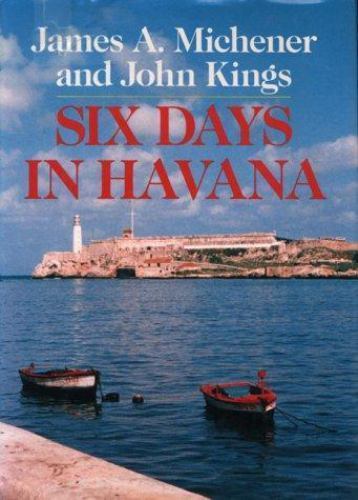Imagen 1 de 1

Foto genérica

Imagen 1 de 1

Foto genérica

Six Days in Havana by James A. Michener and John Kings (1989, Hardcover)

AlibrisBooks (480644)
98,9% de votos positivos
Precio:
USD89,26
Aproximadamente76,82 EUR
+ USD20,42 de envío
Devoluciones:
30 días para devoluciones. El comprador paga el envío de la devolución..
Estado:
New Hard cover
Oops! Looks like we're having trouble connecting to our server.
Refresh your browser window to try again.
Acerca de este artículo
Product Identifiers
PublisherUniversity of Texas Press
ISBN-100292776292
ISBN-139780292776296
eBay Product ID (ePID)77497
Product Key Features
Book TitleSix Days in Havana
Number of Pages144 Pages
LanguageEnglish
Publication Year1989
TopicCaribbean & West Indies, Literary, Caribbean & West Indies / Cuba
IllustratorYes
GenreTravel, Biography & Autobiography, History
AuthorJames A. Michener, John Kings
FormatHardcover
Dimensions
Item Height1.8 in
Item Weight24.4 Oz
Item Length10.2 in
Item Width7.4 in
Additional Product Features
LCCN89-031091
Dewey Edition19
Dewey Decimal972.91/23064
SynopsisJames A. Michener, one of the most celebrated writers of our time, has an extraordinary talent for finding the essence of a place. His books give readers an unmistakable "you are there" feeling, whether set in the South Seas, Alaska, Afghanistan, or Poland. Six Days in Havana has the same immediacy, providing the first glimpses of a city that has been terra incognita to most North Americans for thirty years.With his associate, John Kings, Michener visited Havana during research for a novel on the Caribbean. He was only looking for a house and a sugar plantation in which to set the Cuban portion of his story, but he found much more to excite his interest. Fascinated initially by the spectacle of once-grand public buildings and ornate mansions slowly falling into ruin, Michener and Kings set out to explore all of Havana that they could see in six days.John Kings' evocative photographs and James Michener's insightful text record their impressions of Havana thirty years after the Revolution. The words and pictures beautifully complement each other, offering views of a city that many North Americans may never otherwise see. Michener and Kings visited residential districts, the downtown business and govemment zone, the old city, churches, museums, a distillery, coffee and sugar plantations in the outlying areas, LaVigía, the former home of Emest Hemingway and the fishing village Cojima, the setting for Hemingway's The Old Man and the Sea. They talked with about two hundrcd Cubans-laborers, offfice workers, Catholic religious, diplomats, and joumalists. Michener even held a no-holds-barred press conference for Cuban and foreign journalists.This is firsthand reporting of the finest kind. Michener's impressions of modern Havana open a unique window on a country that is so close and yet so inaccessible to most U.S. citizens.
LC Classification NumberF1799.H34M5 1989
















